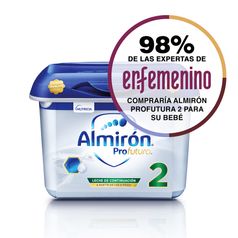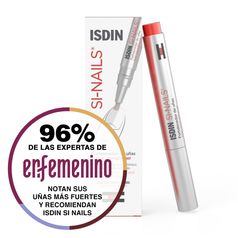¡Hola, comunidad! Aunque nuestro foro esté tomando un pequeño descanso, seguimos aquí para ti. Para todas tus dudas sobre maternidad, sexualidad, belleza, moda, lifestyle... Escribe a comunidad@enfemenino.com. ¡Estamos deseando leerte!
Posicionamiento comisión unión europea en relación implantes de mama. informe dalli
Distinguidas usuarias de este foro.
Soy el Dr. Jaume Serra, cirujano plástico.
Precisamente ahora que la UE, ha pedido a nuestro Presidente que adopte medidas drásticas para salvar la crisis, en el ambito de los implantes mamarios también hay recomendaciones de la UE.
Todas las mujeres que llevan implantes de gel de silicona - intervenidas en España y Europa-, se encuentran incluidas en este marco administrativo que dicta la UE.
Lo he posteado en el original ingles, para evitar malas interpretaciones de la traducción.
Lo podeis consultar también si quereis en internet.
RESUMEN:
1// EN EUROPA, el marco sobre la reglamentación de los implantes mamarios de silicona se delimita por la Interpelacion que hace la Parlamentaria Britanica Catherine Stihler en Agosto 2009 a la Comisión de la UE sobre la calidad de las protesis, sus riesgos y que controles existen.
10 August 2009 E-4071/09
WRITTEN QUESTION by Catherine Stihler (S-D) to the Commission:
¿Can the Commission explain why the use of silicone implants is still allowed in Europe, despite evidence that they can rupture and cause serious health complications?
¿What action is the Commission taking to ensure that people opting for breast enlargement are informed about the hazards of silicone implants, including the timeline for replacing them?
¿Has the Commission made plans to inform women with silicone implants about the dangers of New Silicone Disease?
2// RESPUESTA de la Honorable Comisión a través del Sr. Verheugen, Vicepresidente de Tecnologías en septiembre de 2009.
14 September 2009 E-4071/2009
Answer given by Mr Verheugen on behalf of the Commission
The Honourable Member raises questions related to the safety of silicone implants. Since the Honourable Member refers to breast enlargement practice it is assumed that the questions concern only silicone breast implants and do not relate to other silicone implants.
The Honourable Member makes reference to health complications that may be due to silicone breast implants rupture. It has to be noted that the Parliament contracted an independent group to carry out a comprehensive study on silicone breast implants(1). This study has assessed the health risks posed by silicone breast implants, including the problem of their rupture. The conclusion of this study was not to ban silicone breast implants but to reinforce the requirements that apply to them.
In that context, further to the adoption of a resolution by the Parliament and of a Commission communication in 2001(2), the Commission Directive 2003/12/EC(3) was adopted in February 2003 upgrading the classification of breast implants with medical purpose, from Class IIb to Class III, with the result that the most stringent possible requirements for medical devices apply.
More recently, Directive 2007/47/EC(4) has reinforced the requirements regarding clinical evaluation, in particular for implantable devices and devices in Class III.
Last but not least, a standard on the particular requirements for mammary implants was adopted in 2007 by the European Committee for Standardisation (CEN) and the International Organisation for Standardisation (ISO). This standard was republished in May 2009 by CEN with the document number EN ISO 14607, in order to take into account the changes linked to Directive 2007/47/EC. This standard specifies, for mammary implants, requirements for intended performance, design attributes, materials, design evaluation, manufacturing, sterilisation, packaging and information supplied by the manufacturer.
When it comes to patient information, the Commission considers of utmost importance that women receive all appropriate information in relation to potential benefits and risks of surgical intervention and breast implants. Under Article 152 of the EC Treaty, Member States are responsible for the treatments and procedures carried out in their health systems, including the information they provide to patients undergoing them. Bearing this in mind, the Commission invited Member States in its 2001 communication, in consultation with all interested parties, including patient organisations and support groups, to adopt measures implementing, at national level, a system of adequate and comprehensive patient information.
In the light of the available information on silicone breast implants, in particular through market surveillance activities conducted at national level, the abovementioned different sets of measures seem to be appropriate and complement one another in terms of guaranteeing higher quality and safety for silicone breast implants and adequate patient and user information. On the basis of the above, it seems, therefore, that there are no scientific grounds to ban silicone breast implants. However, the Commission would welcome any additional information the Honourable Member may have on this issue.
In addition to the above, the Commission is considering a revision of the European legal framework for medical devices in order to improve and strengthen this framework and meet the growing expectations of European citizens. In that context, the Commission consulted stakeholders in 2008 on various issues indentified(5). One of these issues is whether it would be appropriate to take any action vis-à-vis implantable products without any medical purpose, for instance breast implants for aesthetic purpose only. Such products fall outside the current scope of the Community medical devices legislation, but do fall under the scope of Directive 2001/95/EC(6) which requires producers to place only safe products on the Market.
(1) http://www.europarl.europa.eu/stoa/publications/studies/19992002_en.pdf (May 2000).
(2) Communication from the Commission on Community and national measures in relation to breast implants, 15.11.2001, COM(2001)666 final; http://eur-lex.europa.eu/LexUriServ/site/en/com/2001/com2001_0666en01.pdf
(3) Commission Directive 2003/12/EC of 3 February 2003 on the reclassification of breast implants in the framework of Directive 93/42/EEC concerning medical devices, OJ L 28, 4.2.2003.
(4) Directive 2007/47/EC of the Parliament and of the Council of 5 September 2007 amending Council Directive 90/385/EEC on the approximation of the laws of the Member States relating to active implantable medical devices, Council Directive 93/42/EEC concerning medical devices and Directive 98/8/EC concerning the placing of biocidal products on the market, OJ L 247, 21.9.2007.
(5) http://ec.europa.eu/enterprise/medical_devices/consult_recast_2008_en.htm
(6) Directive 2001/95/EC of the Parliament and of the Council of 3 December 2001 on general product safety, OJ L 11, 15.1.2002.
3// El 1 de marzo de 2010, contacté con la Sra. Stihler via email, para solicitarle que preguntase a la UE, si esta podría informar de los indices de rotura , encapsulacion y infeccion de las diferentes marcas de protesis de mama, recibí contestación suya el 10 de marzo de 2010, que efectivamente se había hecho eco de mi petición y había hecho esa pregunta.
Parliamentary questions
12 April 2010 E-1878/10
WRITTEN QUESTION by Catherine Stihler (S&D) to the Commission
Subject: Medical complications resulting from silicone implants .
With reference to my question of 24 July 2009, (E4071/09).
¿Can the Commission provide me with the percentage of medical complications as a result of ruptures, infections or contracture of silicone implants used in Europe?
¿Can the Commission also provide a breakdown of these complications by Member State?
4// El 27 de abril de 2010, el Sr. Mr Dalli, responde a esas cuestiones, ULTIMA HORA
Answer given by Mr Dalli on behalf of the Commission . 27 April 2010 E-1878/2010
Commissioner Health and Consumer Policy
As already indicated in the Commission's answer to the written question the Honourable Member refers to the Commission has led a very active policy with regard to breast implants. Among the measures which have been taken, Commission Directive 2003/12/EC(1) classified breast implants as Class III devices to ensure a stringent pre-market assessment of such implants. Furthermore, Directive 2007/47/EC(2) has introduced several procedural and substantial requirements for medical devices including breast implants. However, Directive 2007/47/EC has not introduced a special reporting obligation of Member States with regard to breast implants. Breast implants are subject to the same reporting scheme which is applicable to all devices, the so-called vigilance.
Member States' authorities receive vigilance reports on incidents from the manufacturers and, in some Member States, also from health practitioners. Member States must record and evaluate any malfunction or deterioration in the characteristics and/or performance of a device or any inadequacy of the labelling or the instructions for use which might lead to the death or to a serious deterioration in the health state of the user. However, the medical complications referred to in this question do not necessarily qualify as such. This is why the Commission is not necessarily informed about reports on medical complications as a result of ruptures, infections or contracture of silicone breast implants. The Commission has just received the first vigilance report regarding a silicone breast implant since 2008(3).
Apart from the European legal framework, Member States have, in reaction to the communication on Community and national measures in relation to breast implants of 15 November 2001(4), applied different approaches with regard to the registration and follow-up of women with breast implants. Some have linked the registry on breast implants to the abovementioned vigilance mechanism. Others have established a separate registry or refer to voluntary reporting schemes established by medical associations. Member States have not communicated to the Commission data that would provide an answer to the Honourable Member's question.
The Commission is not in possession of any other source of non-public data, and therefore has no information on the percentage of medical complications as a result of ruptures, infections or contracture of silicone implants other than the information contained in the publicly available scientific literature(5).
(1) OJ L 28, 4.2.2003.
(2) OJ L 247, 21.9.2007.
(3) For purposes of comparison: there were in total 611 vigilance reports in 2009.
(4) COM(2001)666 final.
(5) See e.g. Hedén, P., et al.: Prevalence of rupture in inamed silicone breast implants. In: Plast Reconstr Surg. 2006 Aug; 118(2):303-8. Summary: http://www.ncbi.nlm.nih.gov/pubmed/16874191
Como pueden leer, :
- Son los Gobiernos de cada Estado MIembro los que DEBEN de registrar y evaluar esos incidentes y esas complicaciones.
- No existe a nivel de la Comisión Europea, ninguna información sobre el porcentaje de complicaciones médicas como resultado de roturas, infecciones o contracturas de las prótesis de mama.
Parece ser que nadie, ni ningún Organismo es capaz de contestar a la pregunta de los porcentajes de complicaciones.
Pregunta hecha a :
Sociedades Científicas.
Casas Comerciales.
AEMPS.
Comisión Europea.
Lo cierto es que a fecha actual, sigue sin existir en España, ningún Registro de implantes.
Considero que hemos de seguir insistiendo en la necesidad de ese Registro, para poder tener esos datos cuantitaivos para poder ser trasladados al consentimiento informado.
Atte.
Dr. Jaume Serra
Ver también
10 datos sobre el cáncer de mama que debes saber
Gracias
Muchas gracias por tu interes y la informacion que nos has dado, seguro que muchas de nosotras estariamos dispuestas a insistir y si nos ayudas deberiamos hacer algo entre todas juntas seria mas facil asi que espero noticias tuyas. Saludos
Mil gracias
doctor seguramente, todas nosotras estamos muy agradecidas x esta informacion, le doy las gracias de nuevo, alguna novedad manteganos al tanto, un saludo.

Almirón Profutura 2


ISDIN Si-Nails
